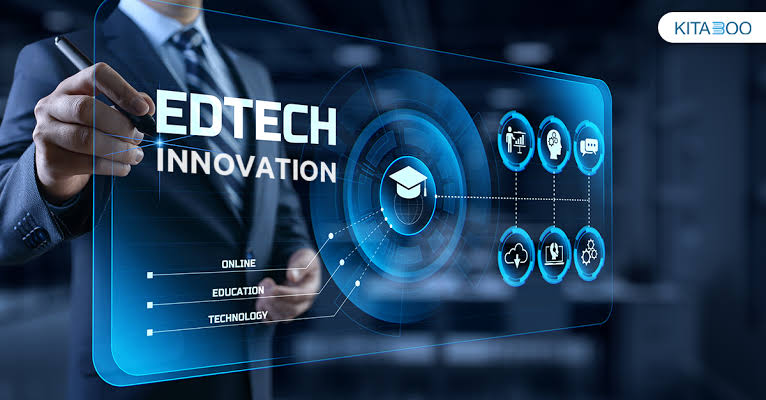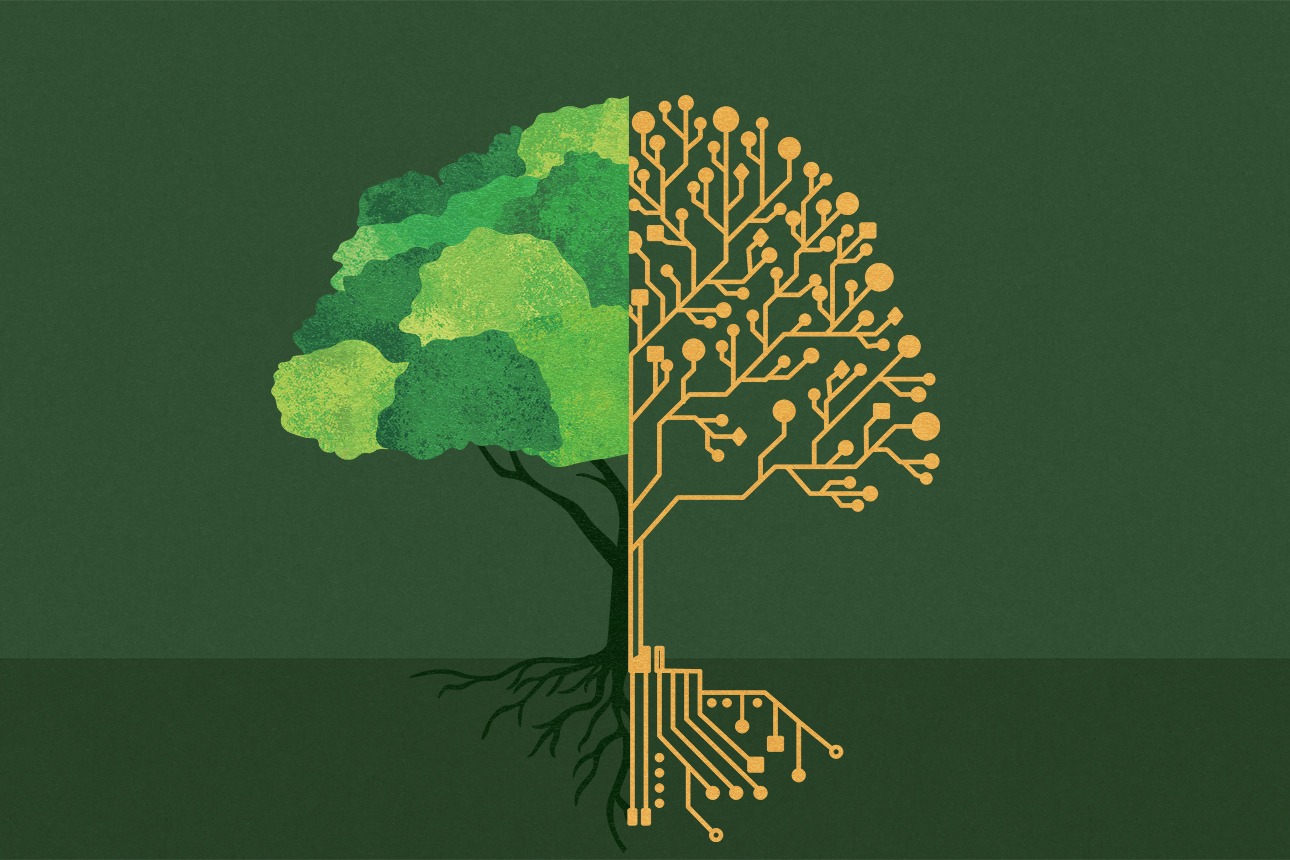
How EdTech Is Bridging the Urban-Rural Divide
EdTech is revolutionizing education by narrowing the urban-rural divide through digital access, inclusive learning tools, and government initiatives. From mobile-based platforms to AI-driven modules, students in remote areas can now access quality education once limited to urban centers. Despite connectivity and device challenges, the growth of EdTech ensures rural learners receive personalized, engaging, and equal opportunities—paving the way for a more educated, empowered, and balanced future
✨ Raghav Jain

Introduction
India is a land of contrasts—especially when it comes to access to education. While urban students often enjoy smart classrooms, tech tools, and skilled educators, rural children frequently face inadequate infrastructure, outdated content, and a lack of qualified teachers. This stark urban-rural education divide has existed for decades, limiting opportunities and growth for millions.
But now, a quiet revolution is underway. Thanks to EdTech (Educational Technology)—the use of digital tools and platforms for learning—the gap is starting to narrow. Smartphones, tablets, low-cost internet, and innovative learning apps are bringing quality education to even the remotest corners of the country.
This article explores how EdTech is transforming learning in rural India, the key tools and technologies involved, real-life impact, challenges that remain, and how we can all contribute to a more inclusive future. Education is often a key differentiator between the opportunities available in urban and rural areas, but EdTech, or educational technology, is rapidly changing this dynamic. For years, students in rural communities have faced challenges like a lack of qualified teachers, limited access to libraries and advanced resources, and a curriculum that can feel disconnected from their surroundings. EdTech is addressing these issues head-on, effectively bridging the geographical and socioeconomic gap through several innovative approaches.
A primary way EdTech is leveling the playing field is by simply making quality content accessible. With increasing smartphone penetration and more affordable data plans, students in remote villages can now access a treasure trove of learning resources right from their phones. Platforms like Khan Academy, BYJU'S, and India's own DIKSHA portal offer high-quality, interactive lessons, e-books, and videos that were once only available to urban students. This is a game-changer, especially in areas with limited or single-teacher schools, as it brings expert educators and engaging content directly into the hands of learners. Many platforms are also innovating with offline learning solutions, allowing students to download educational materials when they have a connection and study without interruption, which is crucial in regions with unreliable internet.
EdTech is also a powerful tool for overcoming the issue of teacher shortages and improving the quality of instruction. Through virtual classrooms and live online sessions, students in rural areas can connect with qualified teachers from urban centers. This not only gives them access to subject matter experts but also provides a more interactive and engaging learning experience than traditional rote memorization. Additionally, EdTech is empowering existing rural teachers by offering digital literacy training and professional development resources. These tools help them integrate multimedia into their lessons, manage administrative tasks more efficiently, and use AI-driven platforms to provide personalized feedback to students, ensuring learning gaps are addressed effectively.
Beyond academics, EdTech is opening up new career possibilities for rural youth. By providing access to vocational training and skill-development courses, platforms are equipping them with skills for the modern digital economy. Courses in coding, digital literacy, and even entrepreneurship are becoming available, helping students explore career paths that extend far beyond their immediate local communities. This exposure not only broadens their horizons but also provides them with the tools they need to secure better livelihoods and break the cycle of poverty.
However, the path to a truly equitable education is not without its challenges. The digital divide remains a significant barrier, with many rural areas still lacking reliable internet connectivity and a consistent power supply. There's also a need for more localized, culturally relevant content that is available in regional languages to ensure true inclusivity. Addressing these issues will require continued collaboration between governments, NGOs, and the private sector to invest in infrastructure, create accessible content, and provide the necessary training to both teachers and students. The impact of EdTech on rural education is undeniably positive, but a concerted effort is needed to ensure its full potential is realized, paving the way for a future where every child, regardless of where they live, has the opportunity to learn, grow, and succeed.
Understanding the Urban-Rural Education Gap
Before diving into solutions, we must understand the core issues behind the rural-urban education gap:
Key Challenges in Rural Education:
- Shortage of qualified teachers
- Lack of updated curriculum and teaching tools
- Poor infrastructure: no electricity, internet, or classrooms
- Low digital literacy among students and teachers
- Language barriers (most resources in English)
- Economic constraints, forcing children into work
In contrast, urban schools often have:
- Access to e-learning platforms and smart classes
- English-medium education
- Regular teacher training
- Faster adoption of new educational practices
How EdTech Is Leveling the Playing Field
EdTech doesn’t require fancy buildings—it needs a device, an internet connection, and the will to learn. Here's how it's helping rural India:
1. Access to Quality Content
Students can now learn from top educators through YouTube, Byju’s, Khan Academy, and Diksha—even in remote villages.
- Subjects explained in regional languages
- Free video lessons, quizzes, and practice materials
- Anytime, anywhere learning with offline downloads
2. Interactive & Personalized Learning
EdTech apps adapt to each student’s pace, learning level, and interests.
- Gamified learning makes tough subjects fun
- AI-based platforms provide real-time feedback
- Students can repeat lessons until they master the concept
3. Teacher Training & Support
Platforms like DIKSHA offer government-approved training to rural teachers, helping them improve skills and adopt digital teaching.
- Pre-loaded lesson plans
- Digital attendance and assessments
- Peer-learning communities for rural educators
4. Bridge Language & Curriculum Gaps
Many EdTech apps now provide:
- Multilingual support (Hindi, Tamil, Marathi, etc.)
- State-board aligned curriculum
- Culturally relevant stories and examples
This makes it easier for rural students to relate and learn.
5. Affordable & Scalable
Most EdTech tools are:
- Free or low-cost
- Accessible on basic smartphones
- Scalable to thousands of students across regions
No need for physical textbooks or tuition classes.
Digital Tools Empowering Rural Education
Mobile Learning Apps
- BYJU’S, Toppr, Vedantu, Khan Academy: Offer K-12 video content
- Diksha App: Government-backed, curriculum-based lessons
- Pratham’s ReadAlong App: Promotes early reading skills in Indian languages
Smart Class Setups
- Solar-powered smart classrooms in rural schools
- Tablets with preloaded educational content
- Digital blackboards, projectors, and audio tools
WhatsApp & YouTube Classes
- Teachers share video/audio lessons over WhatsApp groups
- Rural YouTube educators explain concepts in local dialects
- Parents stay updated on student progress easily
Radio & TV Learning
- National channels like PM eVidya or Doordarshan’s Swayam Prabha broadcast educational content daily
- Radio storytelling and science lessons reach areas with no internet
Real-Life Examples of EdTech Impact
- Pratham’s Hybrid Learning Model (Uttar Pradesh & Bihar): Children use tablets during the day and learn with parents in the evening using WhatsApp.
- Khan Academy India collaborated with rural government schools in Maharashtra, improving math test scores significantly.
- eVidyaloka connects urban volunteer teachers to rural students via digital classrooms across 15 Indian states.
- Agastya Foundation’s Mobile Science Labs bring hands-on experiments to rural villages using tablets and portable kits.
Daily & Weekly EdTech Practices for Rural Learners
Here’s a sample structure rural students or facilitators can adopt:
Daily Routine
- 30 mins app-based learning (Khan Academy or Byju’s)
- 15 mins English reading via ReadAlong or YouTube
- Practice 5 new words or 1 new concept
- Watch a short science explainer or storytelling video
How EdTech Supports Teachers in Rural Areas
- Professional Development:
- Training in digital tools, content delivery, and pedagogy.
- Resource Sharing:
- Access to digital libraries, video modules, and assessments.
- Feedback Tools:
- Track student progress, attendance, and test performance online.
- Ease of Communication:
- Teachers stay connected with parents via WhatsApp or SMS.
Challenges That Remain
While EdTech is promising, barriers still exist:
- Limited Internet Connectivity in remote villages
- Lack of Digital Devices—many families share one phone
- Low Digital Literacy among parents and educators
- Gender Gap—girls often have less access to phones or time to study
- Language Diversity—not all content available in tribal or local dialects
Solutions:
- Community learning centers with shared tablets
- Offline content on SD cards or USBs
- Local EdTech champions to train others
- Subsidized or government-distributed smartphones
- Collaboration between NGOs, startups, and schools
Myths About EdTech: Busted!
“EdTech is only for urban or private schools.”
→ False! Government schools in rural India are increasingly using free EdTech apps and radio classes effectively.
“Technology will replace teachers.”
→ Wrong! EdTech supports teachers—not replaces them. The human touch is still essential for motivation and connection.
“Students in villages can’t handle digital learning.”
→ Not true! With guidance, even children from tribal areas learn coding and digital art via EdTech.
“Internet is a must for EdTech.”
→ Nope! Many apps offer offline access or use SD cards, radios, or solar-powered devices in low-connectivity zones.
“Girls can’t access EdTech in rural areas.”
→ A challenge, yes—but with family awareness and local support, many rural girls now learn coding and public speaking online.
Sample One-Device EdTech Setup for Rural Homes
- Smartphone with basic internet
- Install 2–3 free learning apps (Khan, ReadAlong, Diksha)
- Use audio content during power cuts
- Share device time between siblings (in shifts)
- Encourage parents to observe or learn too!
How We Can Support This Movement
- Donate old phones, tablets, or laptops to NGOs
- Volunteer to teach or mentor online for rural kids
- Promote free learning tools in your network
- Support policies for digital inclusion and rural internet
- Advocate for regional-language EdTech content
Conclusion
EdTech is not a miracle, but it is a powerful bridge between India’s urban advantages and rural dreams. By making quality education accessible, affordable, and engaging, EdTech is giving rural students a chance to compete, grow, and thrive in a digital world.
As digital infrastructure expands and awareness increases, we can expect an even more inclusive future—where a child in a remote village has the same opportunity to learn and succeed as one in a metro city.
The future of education is digital.
The future of India is inclusive.
Let’s bridge the gap, one child, one device, and one lesson at a time.
Q&A Section
Q1:- What is EdTech and how is it transforming education in rural areas?
Ans :- EdTech refers to the use of digital tools and platforms to deliver education. In rural areas, it provides access to quality content, expert teachers, and interactive learning, overcoming barriers of distance and infrastructure.
Q2:- How do online learning platforms help bridge the urban-rural education gap?
Ans :- Platforms like BYJU’S, Khan Academy, and SWAYAM offer standardized content accessible to students anywhere, ensuring rural learners receive the same quality education as urban students.
Q3:- What role do mobile phones play in rural EdTech access?
Ans :- With increasing smartphone penetration, students in remote areas can access learning apps, attend live classes, and download materials even without personal computers.
Q4:- How are government initiatives supporting EdTech in rural regions?
Ans :- Schemes like PM eVidya, DIKSHA, and Digital India aim to provide free digital content, teacher training, and tech infrastructure to boost rural education.
Q5:- What challenges still exist in implementing EdTech in rural areas?
Ans :- Key challenges include unreliable internet connectivity, lack of digital literacy, limited electricity, and affordability of devices, which can hinder consistent learning.
Q6:- How is EdTech improving teacher training in rural schools?
Ans :- Online modules and virtual workshops offer rural educators access to modern teaching techniques, curriculum updates, and peer learning, enhancing classroom delivery.
Q7:- What impact does EdTech have on student engagement in villages?
Ans :- Interactive videos, gamified content, and real-time quizzes keep rural students engaged and motivated, making learning more enjoyable and personalized.
Q8:- How does EdTech support inclusive education in underserved communities?
Ans :- It enables education for girls, working children, and differently-abled students by offering flexible, accessible, and stigma-free learning environments.
Q9:- Can EdTech reduce the migration of students from villages to cities?
Ans :- Yes, when quality education is locally accessible through EdTech, students are less compelled to relocate for better schooling, reducing urban migration.
Q10:- What is the future of EdTech in bridging the urban-rural divide?
Ans :- With expanding digital infrastructure and AI-powered adaptive learning, EdTech is poised to democratize education and ensure equitable learning for all.
Similar Articles
Find more relatable content in similar Articles

Virtual Reality Therapy: Heali..
Virtual Reality Therapy (VRT) .. Read More

3D-Printed Organs: Are We Clos..
3D-printed organs are at the f.. Read More

The Hidden Energy Cost of Stre..
As digital streaming and onlin.. Read More

The Rise of Digital Twins: You..
Digital twins are transforming.. Read More
Explore Other Categories
Explore many different categories of articles ranging from Gadgets to Security
Smart Devices, Gear & Innovations
Discover in-depth reviews, hands-on experiences, and expert insights on the newest gadgets—from smartphones to smartwatches, headphones, wearables, and everything in between. Stay ahead with the latest in tech gear
Apps That Power Your World
Explore essential mobile and desktop applications across all platforms. From productivity boosters to creative tools, we cover updates, recommendations, and how-tos to make your digital life easier and more efficient.
Tomorrow's Technology, Today's Insights
Dive into the world of emerging technologies, AI breakthroughs, space tech, robotics, and innovations shaping the future. Stay informed on what's next in the evolution of science and technology.
Protecting You in a Digital Age
Learn how to secure your data, protect your privacy, and understand the latest in online threats. We break down complex cybersecurity topics into practical advice for everyday users and professionals alike.
© 2025 Copyrights by rTechnology. All Rights Reserved.